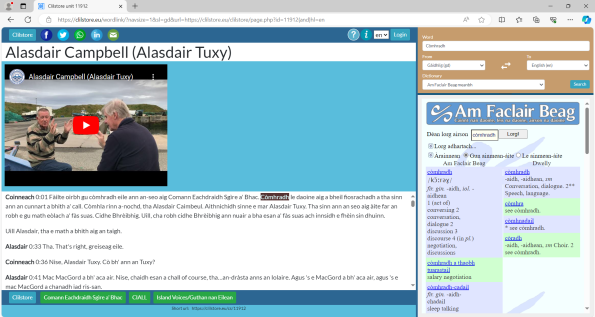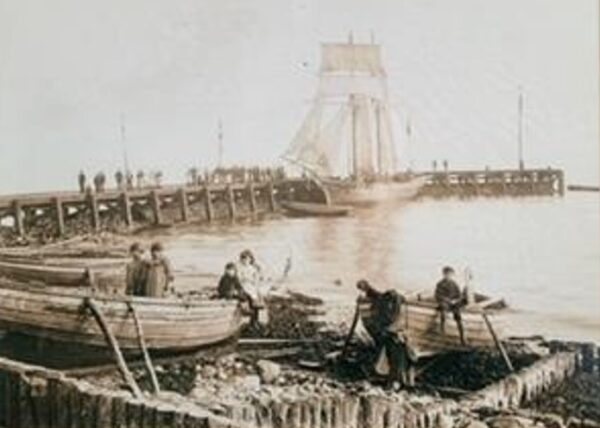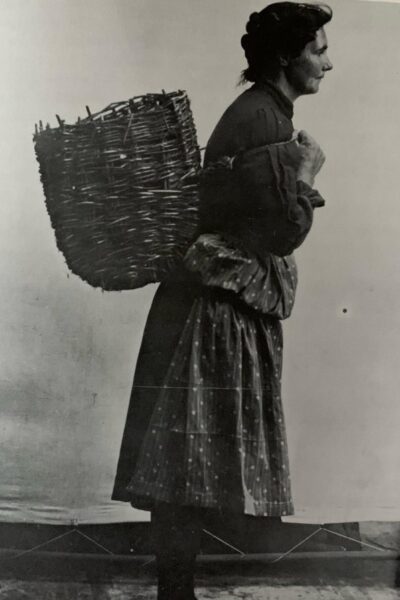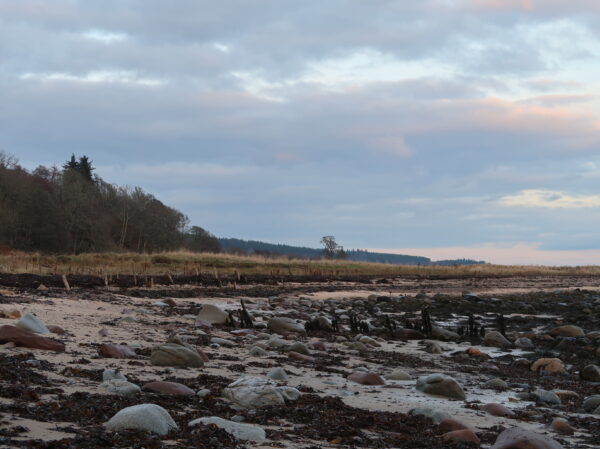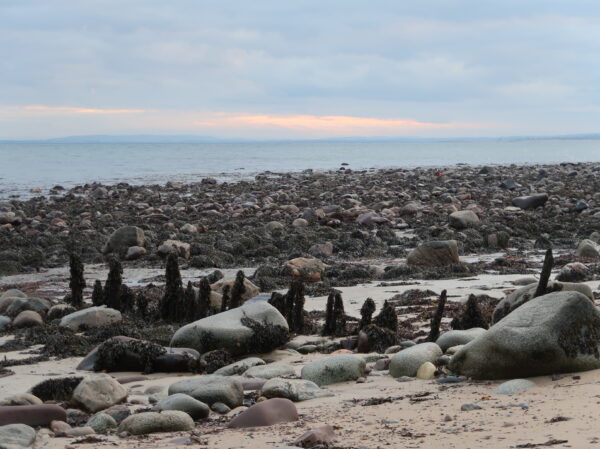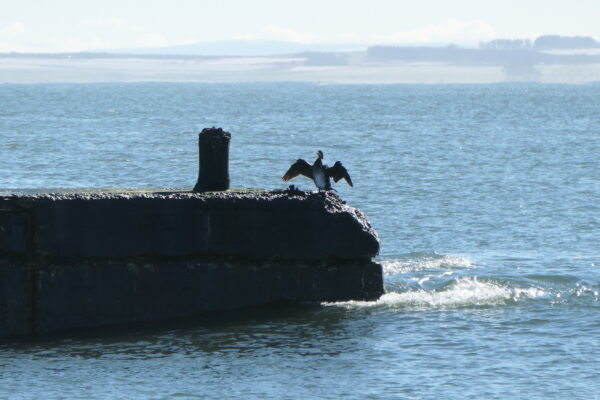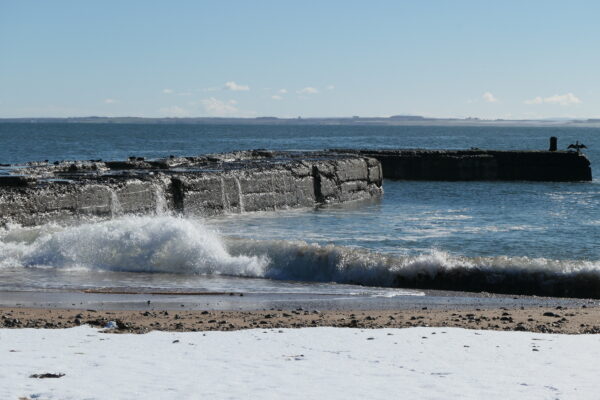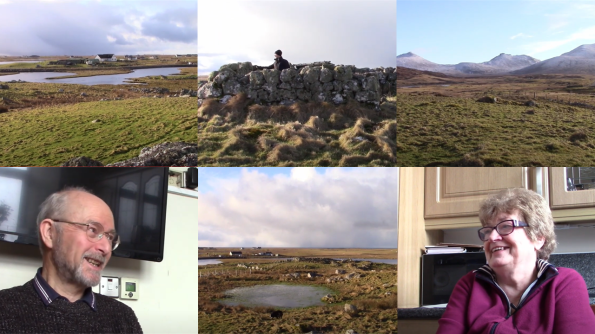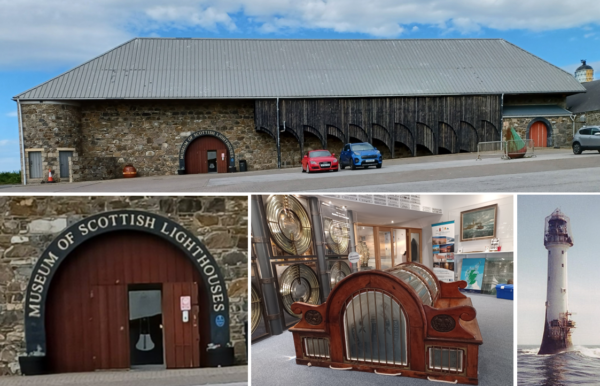
Sgrìobh mi an-uiridh mu Thaigh-solais a‘ Chinn Àird ann am Baile nam Frisealach. https://www.seaboardgaidhlig.com/2023/11/06/2023-an-t-samhain-an-ceann-ard-nov-kinnaird-head/ Dìreach ri thaobh tha Taigh-tasgaidh nan Taighean-solais Albannach, agus tha sin a-nis fosgailte a-rithist às dèidh obair is ùrachadh a’ gheamhraidh. Mar sin innsidh mi dhuibh beagan ma dheidhinn am mìos seo, agus mholainn tadhal air seo cuideachd, còmhla ri turas tron Taigh-solais a’ Chinn Àird fhèin.
Tha an togalach làn stuth tarraingeach ceangailte ri taighean-solais agus cuideachd ri eachdraidh nan taighean-solais Albannach, gu h-àraidh cruinneachadh sònraichte de sholasan (“optics”) à iomadh taigh-solas air feadh na dùthcha, far an deach na stèiseanean sin ùrachadh. Tha cuid gu math mòr, àrd, agus faodaidh tu dol glè fhaisg orra fhad ‘s a bhios tu a’ coiseachd nam measg tron talla-thaisbeanaidh mhòr. Tha lionsaichean is lampaichean eile ann cuideachd, mòra is beaga, agus mìneachadh soilleir aig gach fear, m.e. tha solas taigh-solais Rubha na Cananaich ri fhaicinn an sin.
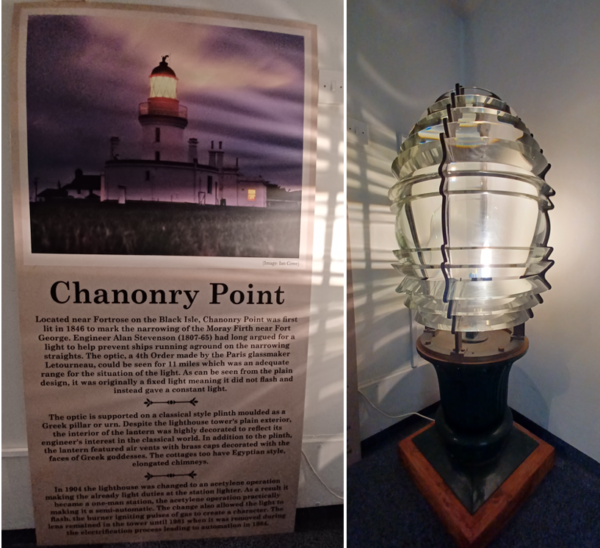
Tha storas an taighe-thasgaidh air a sgaoileadh thairis air dà ìre, le eachdraidh nan taighean-solais air a sealladh ‘s a mìneachadh sa phàirt suas an staidhre. An sin ionnsaichidh tu mu theaghlach ainmeil nan Stevensons, ach mu einseinnearan, dhèanadairean-lionsaichean, is luchd-togail cudromach eile cuideachd, a chluich pàirt mhòr, is mar as trice pàirt gu math dana, ann an cruthachadh sreath de thaighean-solais timcheall air costa carraigeach na h-Alba. Tha uidheam, cairtean, modailean ann, sgeulachdan mu mhi-shealbh is shàbhaladh, a h-uile rud a’ toirt beatha do sgeul tarraingeach nan togalaichean suaicheanta seo. Tha rudeigin inntinneach ann do gach neach, inbhich mar chlann. Chunnaic mi teaghlaichean gu lèir air am beò-ghlacadh leis na mìorbhailean an sin. As t-samradh tha geamaichean is cur-seachadan a bharrachd ann dhan chloinn cuideachd.
Tha aon rud sònraichte drùidhteach a chì thu thairis air an dà ìre, is sin solas taigh-solais Sanda à 1882 – tha feum air toll mòr eadar an dà làr gus a shealladh, is e cho àrd. Agus air a’ bhun-ùrlar tha barrachd ann mu na bàtaichean a dh’fhritheil na taighean-solais, agus na criuthaichean a sheòl iad tro na siantan – gaisgich gu leòr an sin cuideachd, comhla ris na glèidheadairean-taigh-solais calma fhèin.
Fiù ‘s nach eil sibh uile nur luchd-leantainn taighean-solais mar a tha mise, tha mi cinnteach gur e sgrìob gu math tarraingeach a bhiodh ann do gach neach a bhuineas do choimhearsnachd na mara, gu sònraichte air a cho-cheangal ri tadhal air Taigh-solais a’ Chinn Àird.
Tha buth is cafaidh anns an taigh-tasgaidh, agus tha e fosgailte as t-samhradh gach latha 10m gu 5f. Barrachd fiosrachaidh an seo: https://lighthousemuseum.org.uk/
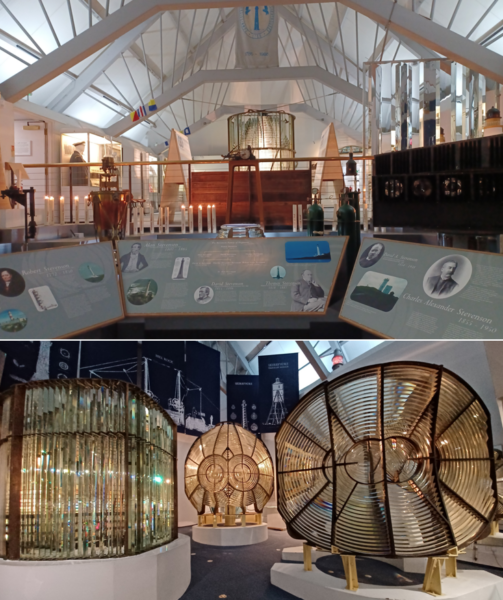
Museum of Scottish Lighthouses
Last year I wrote about Kinnaird Head Lighthouse in Fraserburgh. https://www.seaboardgaidhlig.com/2023/11/06/2023-an-t-samhain-an-ceann-ard-nov-kinnaird-head/ Right beside it is the Museum of Scottish Lighthouses, and that’s open again now after its winter work and update, so I thought I’d tell you a bit about it this month. I can highly recommend a visit there too, along with a tour round Kinnaird Head Lighthouse itself.
The building is full of fascinating stuff connected to lighthouses and also to the history of Scottish lighthouses, especially the outstanding collection of the lights (“optics”) from the many lighthouses around the country that have now been modernised. Some are very large and tall, and you can get right up to them as you walk among them through the big exhibition hall. There are other lenses and lamps there too, large and small, with clear explanantions for each of them, e.g. you can see the Chanonry Point lighthouse optic there too.
The museum’s collections are spread over two levels, with the history of the lighthouses displayed and explained in the upstairs part. There you learn about the famous Stevenson dynasty of lighthouse-builders, but also about all the other engineers, lense-makers, and important builders who played a large part, and often a daring one, in the creation of the chain of lighthouses around the craggy coast of Scotland. They have equipment, charts, and models, tales of disaster and rescue, all bringing to life the fascinating story of these iconic structures. There’s something of interest for everyone, adults and children alike. I saw whole families captivated by the marvels on display. In the summer there are also extra activies for children.
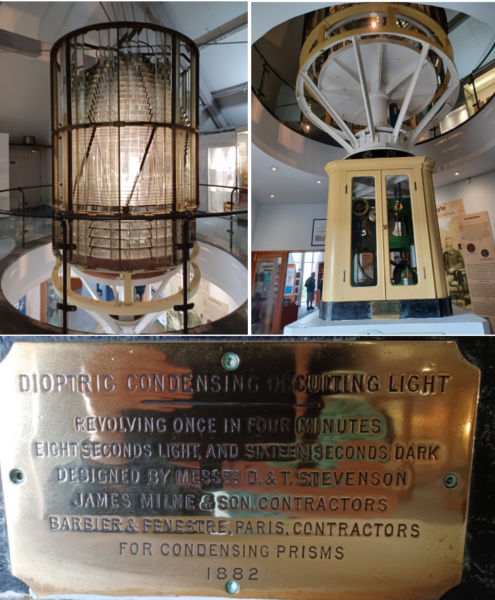
There’s one very special item that you’ll see over the two levels – that’s the Sanda light from 1882; they had to make an opening between the two floors to display it, it’s so high. And on the ground floor there’s more about the boats that served the lighthouses and the crews who sailed them through the elements – plenty of heroes there too, along with the hardy keepers themselves.
Even if you’re not a lighthouse fan like me, I’m certain that this would be a great day out for anyone from a coastal community, especially when combined with a visit to the neighbouring Kinnaird Head Lighthouse. There’s shop and a cafe too. Summer opening hours are daily 10am to 5pm. More information here: https://lighthousemuseum.org.uk/

Powered by WPeMatico
Tadhail air seaboardgàidhlig

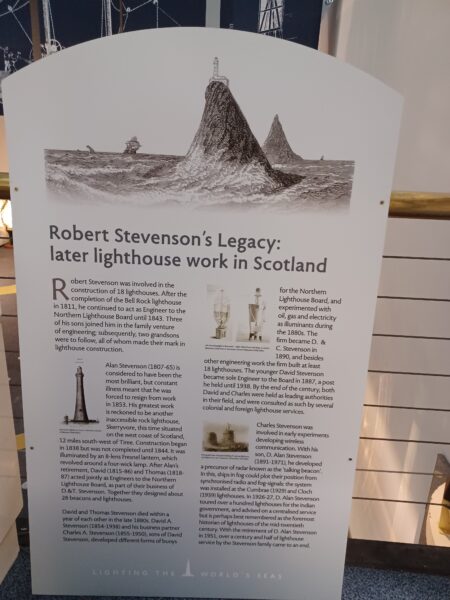
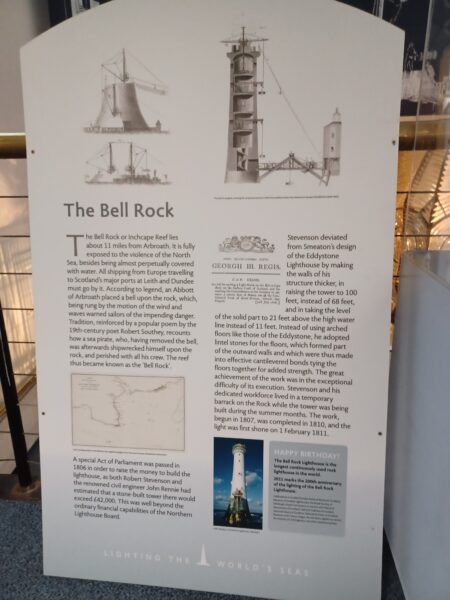
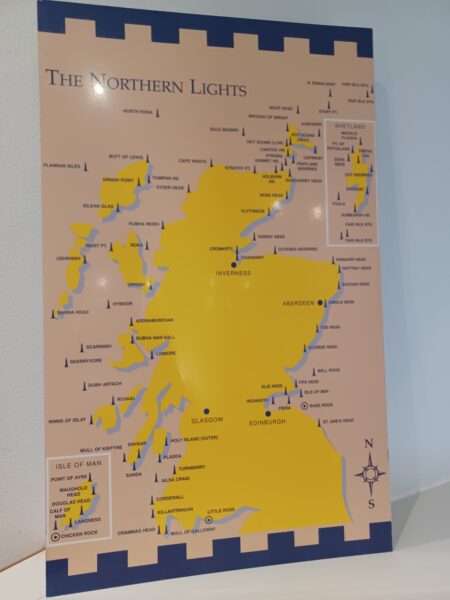
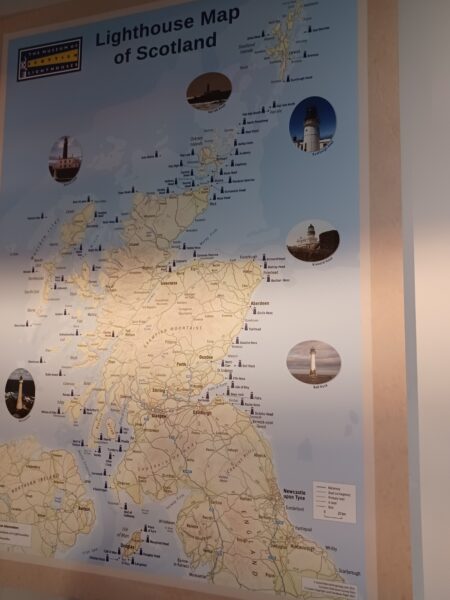

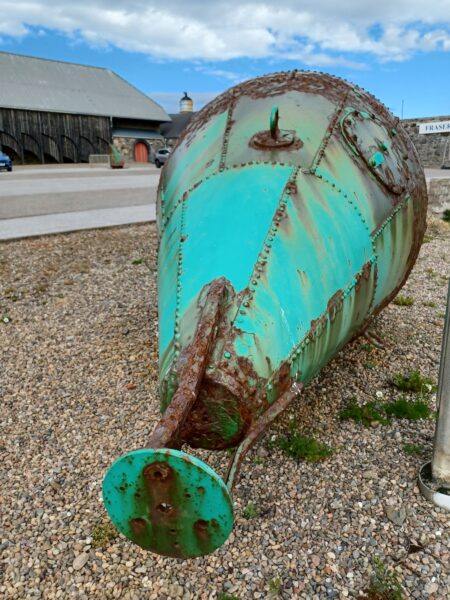
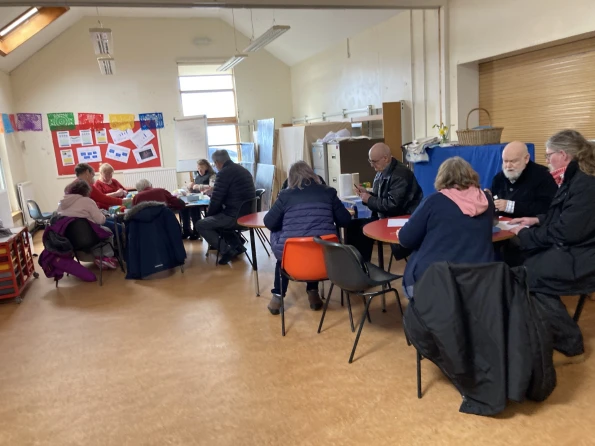
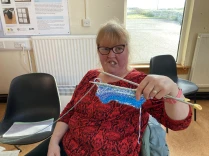 Gaelic method of reciting of the male members of a family tree, sloinneadh, all the precious ‘connections to the local community’, heritage of knitting, peats, creel and rope making, weaving, families widening out but often returning, ‘recognising our closeness to other cultures‘, ‘confidence in new life’, growth – babies of all species- keeping the ceilidh culture and the songs going, the ‘friendliness’ of the community.
Gaelic method of reciting of the male members of a family tree, sloinneadh, all the precious ‘connections to the local community’, heritage of knitting, peats, creel and rope making, weaving, families widening out but often returning, ‘recognising our closeness to other cultures‘, ‘confidence in new life’, growth – babies of all species- keeping the ceilidh culture and the songs going, the ‘friendliness’ of the community.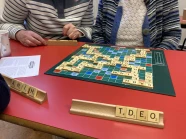 The Cafaidh Gàidhlig sessions were also held in Sgoil Chàirinis over February and March. Smaller numbers here made these more intimate occasions and provided Gaelic speakers with an opportunity to speak freely in an informal setting. Games and learning activities, including the new Gaelic version of Scrabble and a beginners’ Gaelic lesson were available each morning.
The Cafaidh Gàidhlig sessions were also held in Sgoil Chàirinis over February and March. Smaller numbers here made these more intimate occasions and provided Gaelic speakers with an opportunity to speak freely in an informal setting. Games and learning activities, including the new Gaelic version of Scrabble and a beginners’ Gaelic lesson were available each morning.